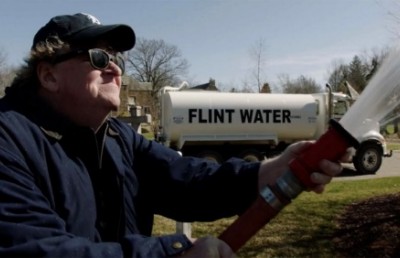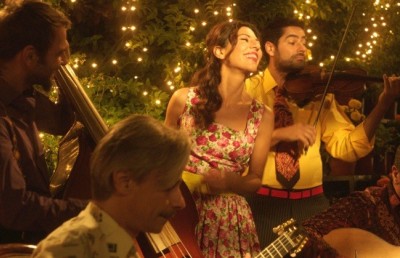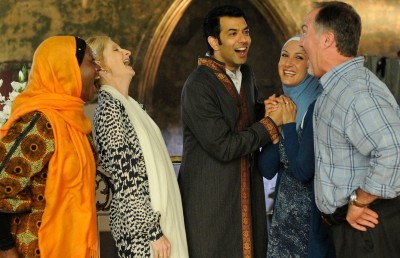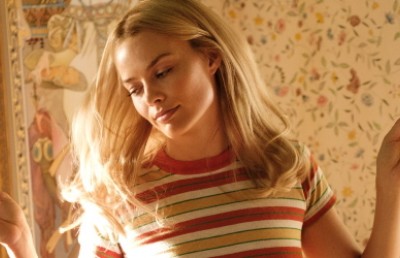Bad Feminists are the Bingeworthy Storytellers Television Needs
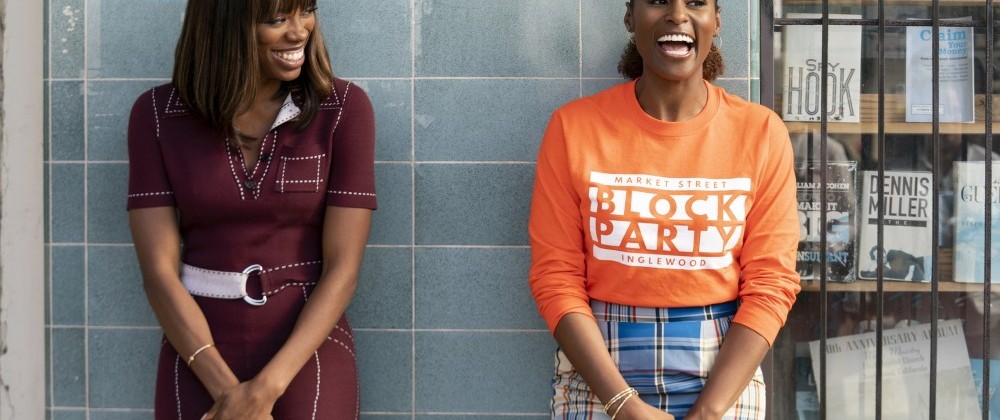
One night a week after a high school basketball or volleyball practice, Sex and The City (SATC) was the guilty pleasure my mom and I indulged in as I scarfed down some form of pasta and she tipped back her Barefoot Chardonnay. We laughed in shock at Samantha’s bluntness, admired Carrie’s wit, snapped our fingers at Miranda’s unabashed cynicism, and rolled our eyes at Charlotte’s prudence, as all four women challenged ideas of women’s sexuality and what it meant to be a single, straight woman in New York in the early 2000’s. More than a decade after watching the series, I decided to binge it again as a twenty-five year old, and was stuck somewhere between disgust and my jaw hinged open in amused shock, as the voices of women I once called feminists in the middle of our living room now echoed with a phony airiness against the much smaller walls of my shared apartment. Rewatching SATC has burdened me with an insatiable thirst for television shows that gift us with the stories of bad feminists.
At the time it ran from 1998 to 2004, SATC was considered groundbreaking by the media. The show won seven of the fifty four Emmys and eight of the twenty four Golden Globes for which it was nominated. Based on the novel written by Candace Bushnell, the romantic comedy-drama series follows the friendship between four single women in their thirties and forties as they navigate their personal and dating lives in New York City, narrated by the sex columnist Carrie Bradshaw. Each episode is dedicated to a theme, in which writer Carrie Bradshaw debunks the myths of dating, for women. For example, “Three’s a crowd,” is dedicated entirely to the theme of threesomes. Charlotte’s boyfriend wants her to have a threesome, Samantha decides not to have a threesome with a married couple, and Miranda’s feelings are hurt because she hasn’t been asked to have a threesome. By the end of each show, Carrie’s sex column transforms from a tell-all for her and her three best friends, to a dating guide for the show’s primarily female audience, as Carrie’s conversational tone is directed at her listeners.
SATC was created and written primarily by men. Darren Starr was the main writer and creator, and received many written contributions from Michael Patrick King. The show’s four main characters, all women, were inspired by Bushnell’s series, but the plots and deeper character development of all four women were brought to life and washed over by the men who directed and wrote the show. The lack of female writers is painfully obvious throughout the series, and at times feels like women are acting out a man’s idea of what feminism and women’s sexual liberation looks like.
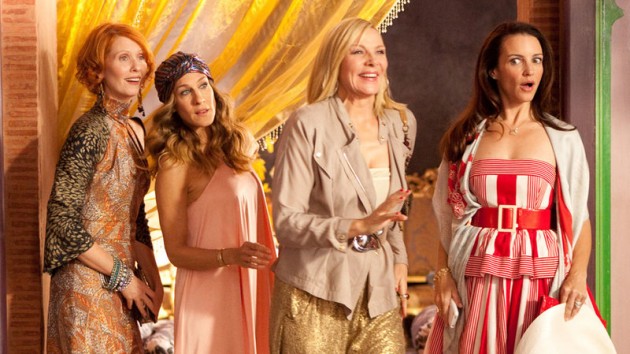
Journalists and academics have harshly criticized the show for a number of cringeworthy reasons, including its lack of diversity (the only people of color in the entire series are the help or Samantha’s one Black boyfriend with the “really big dick”), its narrow-minded stereotypes of LGBTQ people (New York’s “power lesbians” that kick Charlotte out of their clique for not “eating pussy” and the portrayal of every single gay man as effeminate), and the shows over-the-top emphasis on materialism. The most common criticism I’ve seen is that the women on the show obsess about dating men, despite the fact that they champion being single. In fact, they don’t really talk about anything else except men and the sex they’re having with them, and at times shame each other for having too much or overly promiscuous sex. The most blatant contradiction is that all four friends seem to encourage each other to enjoy being single, but all eventually settle down with men that are quite flawed themselves. Journalist Tanya Gold wrote in a Telegraph article in 2003 that Sex and The City is to feminism what sugar is to dental care.” Still, not all feminists and academics are critical of the show, and some say the show provided one of the first platforms for women to talk about sex, proving that a show featuring only women could be wildly successful.
At the core of the show’s myriad of flaws is the lack of female writers, creators and producers and how that lack of insight was reflected in the stories of the four women who were the core of the show. Readers and critics have accused the series of dumbing down the complexity in Carrie’s character. London Times journalist Shane Watson wrote that in comparison to the series, Bushnell’s original writing of Carrie’s character is “altogether smarter and funnier, and her story is way more interesting, because it has been ugly and sordid at times.” Another journalist wrote in the Guardian in 2013, “Compared with the hugely popular television series, the book is tough, unapologetic and jittery with anxiety.” The women in the book are portrayed as far more complex and raw human beings who care about their jobs and their identity, but in the television series I don’t know any more about Carrie, Miranda, Samantha and Charlotte at the end of season six than I did in the Pilot episode, besides what we learn about the men they date.
What I think is particularly interesting is how pedagogic the show is. At the end of each episode, Carrie ends with a direct dialogue she gives to the audience, which is both the audience watching the show and her majority women-read sex column she writes for the paper. Episode three of the show’s second season, “The Freak Show,” opens with black and white pictures of immigrants getting off of boats at Ellis Island with eyes full of nervous hope to the kind of hope and desperation women have on their first dates. The show then spans out to modern-day Manhattan as women venture out on dates on a Saturday night. Carrie’s narrating voice coaxes the viewer further into the city, as the camera moves through what looks like a packed bar on a weekend. “On Saturday nights, every restaurant in lower Manhattan resembles its own little Ellis Island — hoards of single women crowded into a hot cramped space hoping to make it to their final destination: holy matrimony.” The show doesn’t attempt to make any more cringeworthy connections between white women in their thirties and immigrants arriving to the United States, and instead follows all three of Carrie’s friends who have a series of first dates with men who end up revealing some fatally freakish quality much later in the evening of the first date, or several dates later — to the dismay of the women.
The lesson of “The Freak Show” is that in your thirties as a woman, you may meet plenty of single men in a big city, but most of them are hiding something. So, if and when you do meet a man who isn’t a “freak,” you better settle for him or you are the one with the problem. Carrie is the only one in this episode to go on several dates with a guy and not find anything wrong with him. There is also nothing special about him, either. Paranoid and suspicious of his normalcy, she is convinced he is hiding something and after he leaves her in his apartment, she begins to go through the entire place to quell her insecurities about him. He catches her and breaks up with her for not trusting him. “I thought you were actually a normal one,” he says. Carrie, ashamed, leaves his place in defeat and says to the audience this: “At the end of the day, I was the freak. I came face to face with my freak — a frightening woman whose fear ate her sanity….Somewhere out there is another freak who will love us, understand us and kiss our three heads and make it all better.”
In SATC, there seems to be some overarching lesson each character must take away after a broken relationship, and if the lesson isn’t learned by one of the four women, it is directed at the audience, as if we need to internalize the failure of being single in some way. It is as if the show itself is a “how-to” book for passing the temporary phase of dating and winning the ultimate feat of marriage. Watching it makes you feel good about being single, but passively-aggressively reminds its female audience that being single is a fundamental flaw within the women who champion it.
Revisiting this series while I navigate much more than men in a big city as a twenty-five year old has made it abundantly clear why it is so crucial that we continue to fight for space on creative platforms for more female writers and directors to share their truth, rather than digesting the second-hand stories of modern feminism, written and directed by men. In shows written and produced by women, the female characters are not just complex, they are also struggling with how to be good feminists.
Since SATC debuted its final season in 2004, a wave of television shows have been directed and written by women, especially in the last couple of years. For the first time, half of all TV episodes were helmed by women or directors of color from 2018 to 2019. And while women still comprise between twenty and forty percent of behind the scenes leadership roles in television including producers, writers, creators, directors, and editors, these statistics drastically increase when just one woman is hired into a leadership role. Across all streaming platforms, programs with at least one woman executive producer featured more female characters in speaking roles and major roles than programs with exclusively male executive producers. For programs with at least one woman executive producer, women accounted for thirty-eight percent of writers. On programs with exclusively male executive producers, women comprised twelve percent of writers. The representation of Black, Asian, Latina and other minorities is still just a fraction of those numbers, and tend to only increase couple of percentage points a year, if at all.
In 1998, SATC pilot season, women comprised 39% of speaking characters in prime-time television major roles on television, and 21% of all creators, directors, writers, producers, and executive producers, according to the Center for the Study of Women in Television and Film. During the period SATC ran, more women than ever were cast as lead characters in shows like Murphy Brown, Roseanne, and Grace Under Fire, and while the women in these shows offered a different portrayal of women as unapologetic and unruly, the successful TV series with female-driven narratives that survived past one season were centered around motherhood or marriage.
Drama-comedies like Fleabag, Insecure, Shrill, Feel Good, Russian Doll, Broad City, Gentleman Jack, Marvelous Mrs. Maisel, and many others that have emerged on streaming platforms in the last five years are all written and directed by women and have strong female leads. These shows also star a female protagonist whose character is based off of a real life woman, and sometimes even the writer herself. All these shows use comedy in ways that reveal major flaws in the female protagonists, while we relentlessly laugh and identify with the ridiculous challenges they face in all aspects of their lives. Watching SATC, on the other hand, was like watching a woman awkwardly laugh at a joke made about women.
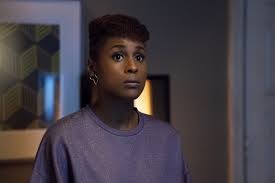
Insecure, which stars main character Issa Rae, is centered around two Black female friends and their lives, which are sometimes uncomfortable, always awkward, and frankly, tell the candid stories that haven’t been told about what it is like to navigate life as Black women in their 30s in Los Angeles. Writer, actress, and executive producer Jo-Issa Rae Diop said that her idea for Insecure (originally “Awkward Black Girl”) didn’t really take off until after she had been consistently rejected from TV writing contests and finally channeled her creativity through YouTube as an undergrad at Yale. In 2017, the year Insecure’s first season aired on HBO, Rae told a crowd of 200 undergrad Mizzou students that even after the idea for Insecure got picked up for the first time by ABC, she had felt like she was losing her voice, because by the time her original idea went through the hands of a team of more experienced directors, it felt like “mush” at the end. After Rae’s final script was rejected by ABC, she pitched it successfully to HBO and Insecure was the first show on the network to be directed and written by a Black woman, with a writing and producing staff of almost all Black women. What I have enjoyed the most about watching these shows is the message that women can just be human beings; we have the right to laugh in the face of the impossible pressure that is put on us to amount to everyone’s expectations, including being a feminist, when it isn’t always clear how in the world we are supposed to act like one.
Navigating the world as a woman in my 20s while trying to be a feminist is nearly impossible and some days I feel like a walking contradiction. We are expected to vehemently negotiate our salaries when offered a job or our complacency is helping to enforce another generation of the pay gap; we should never “settle” for male partners, but also be the fearless champions of our sexual pursuits; We are encouraged to free our nipples and embrace our bodies but hesitate as others tell us we are confusing nudity with liberation, and countless other balancing acts that can sometimes paralyze us, frozen between a tornado of flipping the system over on its head, and turning the patriarchy inside-out by conforming to it first.
The topic of conversation over afternoon lunches or facetimes with my female friends has many times been how we are constantly confronted with difficult moments in our professional and personal lives when we feel like we are “bad feminists,” as we blindly try and establish ourselves with one hand and are expected to tear down the patriarchy with the other, all while smiling — minus the occasional eye twitch. My sister, who started her first adult job as a mechanical engineer in the oil industry, in rural America as the only woman hired into a company of about 80 field engineers, deals with sexist and uncomfortable remarks on a daily basis and feels like the onus is on her to bravely respond as she finds herself being the only woman in the room. She says it is helpful when she sees women on the screen who are also struggling with how to be what society defines as a good feminist. In Fleabag Phoebe Waller-Bridge’s complicated character articulates this confusion perfectly when, on a date, she finds herself in a Catholic group confessional and she stands up in a room full of men to admit her sins: “Sometimes I wonder I wouldn’t be a feminist if I had bigger tits.” Then, she looks at the camera and laughs with us, like she knows exactly who is in on the joke.
In the Pilot episode, Waller-Bridge wastes no time making it clear that the main character is grappling with her own understanding of feminism and identity, as she glances at the camera again and says, “I’m a greedy, perverted, selfish, apathetic, cynical, depraved, morally bankrupt woman who can’t even call herself a feminist.” To me, this line and countless others in the show mock the self-deprecation that is written into female character development in so many other shows. But even after Fleabag won all of its accolades for nudging wider the boundaries of feminism and female representation on TV, articles praising her don’t waste any time pointing out that her character actually is morally depraved, instead of seeing the irony of why she is so conflicted. Articles with positive reviews that go so far as to call Waller-Bridge a comedic genius also describe Fleabag’s character as ““a muse for other people’s self-destruction,” [Link 1 “a pornography watching sex addict,” [link 2 “self-centered,” [link 3 and “her need for sexual affirmation.” [link 4 Would we be talking this way about a male protagonist? This kind of sarcastic honesty in moments of absurdity on screen show the audience, and especially women, that it is okay to not have the kinks completely ironed out within yourself before you can come out of the closet as a feminist, rather than having a narrator or a person prescribe a “fix” for her. Women are tired of being prescribed solutions for problems that were never ours.
There are moments in SATC when Carrie and her friends laugh at the situations they find themselves in, and recognize the impossible expectations put on women. For example, Charlotte sort-of lets go of the insecurities she has about her weight and is able sit naked in a sauna with other women at her local gym. But, the women are not allowed to just “be,” nor can they explore the other absurdities of being a woman in New York, if those problems are not somehow linked to a man. The fact that the forefront of all the female protagonists’ problems is about the men they are dating or sleeping with is like a cute but complacent feminism dressed in some shock effect humor to distract the audience from seeing other truth.
There is one episode in particular that made me almost spit my Trader Joes wine out on to my coffee-stained pajama pants. The title of the episode is called “Politically Erect,” and centers around Carrie’s new relationship with a politician — yes, that is all we ever know about him. In the first sex scene with the politician who Carrie calls “Mr. President,” she jokingly remarks that she has had her “political consciousness raised” as the camera zooms in to Carrie on top of her lover in one of several sex scenes with the politician. Carrie uses the fact that she is dating a politician to talk about how “politics” actually seeps into the power dynamics of the bedroom, and is therefore accessible to women.
The worst part of the episode is when the four fully employed women are out for lunch one summer afternoon, each eating a salad and drinking a cosmopolitan, and conversation about Carrie’s dating a politician leads to a roundtable discussion about how “fuckable” past American presidents were based on their sense of fashion. Clever? I guess, but it sounds like the kind of conversation men would want to hear women talking about over a salad as they use their forks like hockey sticks to put past sprinkled croutons. Four women in public relations, journalism, law and art dealing won’t talk about “politics” as if every single one of those fields were not touched by politics, culture, history, gender, race, and sex in some way.
Charlotte teases Carrie for dating a politician because Carrie is unregistered to vote, and then adds that she herself would only consider “getting interested in politics” because it is a great way to meet men. While white and upper middle class privilege may have bought these women some of the freedom to not care about “politics” for themselves, most women watching can’t afford not to care.
I haven’t heard someone say, “let’s not talk about politics” in a while, unless they were a member of my family and begrudgingly just lost a thirty second debate at the table of Thanksgiving dinner. With the rapid expansion of social media and access to the internet, even if the information that is filtered through each individual’s newsfeed is severely biased or sometimes completely false, everyone is plugged into “politics.” Not only is being an art dealer, lawyer, public relations agent, and journalist inherently political, being a woman is inherently political. More and more TV shows recognize this, and are finding ways to make the ways each of our lives are inevitably touched by politics relatable through humor, without glazing over it as if we are still under the illusion that there are separate spheres of influence for men and women. While there are many shows that portray women as ignorant, complacent, and boring, but don’t worry — hot, it stings an inch deeper when that complacency is written into one of the very few shows at the time where the story is explicitly about women.
The difference between the shows written about women and by women today and shows like SATC in the late 90s and early 2000s, is in the core tension of the female protagonists which leads them down their narrative maze. For Carrie, Samantha, Miranda and Charlotte, the central issue of every episode is finding a man. Although the show opens up a platform for the women to talk about (straight) sex in a way that had been off-limits before, and satirizes dating from a women’s point of view, it completely misses the opportunity to talk about identity, and it desperately needs to. While there is sometimes a charming seed of truth to each character’s dilemma, it glosses over their humanity by feeding into one of the oldest gender stereotypes in the book. As a viewer, it felt like I was holding my breath as the stress of that missing piece resonated with me beyond the screen. I finally let out a sigh of relief when shows like Fleabag, Broad City, Feel Good and others reminded me that women can be both funny and complex, and they can have an opinion about how fucked up shit is, too. Shows that are written and directed by women feature female protagonists who are fundamentally confused about who they are — something every human experiences because of the contradicting expectations that we are burdened with by society on a daily basis.
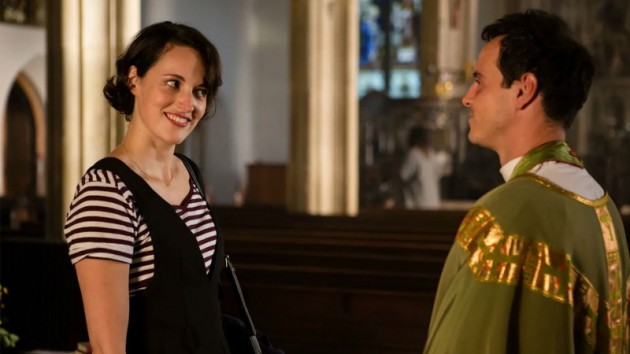
There is still a shockingly wide gap between men and women writers and a loss of perspective there, but women are realizing they cannot afford to not care about politics. What is crafty about shows now is that the writers use comedy to reveal uncomfortable truths, and they talk about “politics” in ways that are unique to a feminist point of view, in ways that men can’t and never could write or direct, but could relate to as an observer. Issa Rae’s character on Insecure is constantly put in awkward situations at work — a nonprofit called “We Got Y’all” that helps students in low-income areas get access to academic resources (the logo is a white hand propping up children of color). Issa is often asked uncomfortable, racist questions by her coworkers that she is expected to answer as the token Black woman in the room, on behalf of all Black people. Most of the time, Issa doesn’t feel like responding, and sometimes she claps back with a glorious roast that feels so good to watch but we soon realize was just a daydream. Like in the TV and film industry, the show also points out that the lack of other like-minded voices in the room is a powerful deterrent to speaking up when your job security hangs in the balance. Rae uses comedy to address big issues of race, identity, fear and insecurity in a way that is unique to her experience as a Black woman. Hopefully, in the next few years, with the emergence of more female writers, women of color, and queer women, comedy will continue to be used not as a way to safely make light of current social and political positions women are in, but as a form of activism to challenge the absurdity women face daily and to not place the burden of challenging the institutions and social beliefs that enforce those positions entirely on women. Comedy is about telling uncomfortable truths, and what makes comedy funny is its ability to be uncompromisingly relatable.
At a town hall event in New York City shortly after the show won all three Emmys, Phoebe Waller Bridge told the crowd that the reason she wrote her character in Fleabag is from rage she feels within herself.
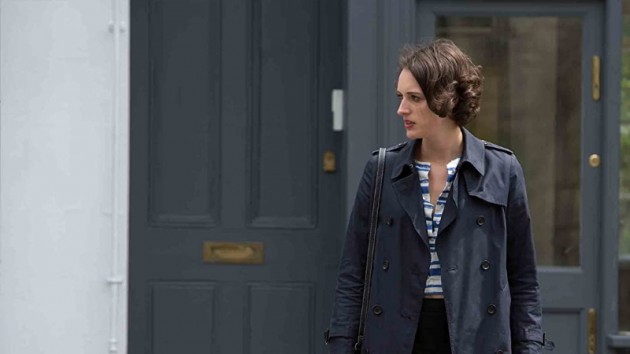
“I feel a sort of burn when I’m writing something that feels truthful and a bit dangerous and writing the play was just a big ole burn. And it was driven by that sense of rage. What if I just said onstage what I say to my friend? Or if I just express some of the rage that I have but turn it up?…”
Comedy, of course, also introduces a sort of sympathy that makes the rage and injustice that motivates it easier to digest. As Mark Twain wrote, “Against the assault of laughter, nothing can stand.”
When I recently asked my mom what it was she loved so much about SATC, she told me that at the time it came out, it was a big deal because it was a show about women, their friendship, and women’s sexual freedom, and there were no other TV shows brave enough to say what those women on the show said. Now, I am watching the show and am finding it almost impossible to relate to because the women on the show are not bad feminists. They are entirely unreal; they play into the stereotype of a good woman, which has become synonymous with a good feminist.
In Roxanne Gay’s Ted Talk, “Bad Feminist,” she makes the point that being a feminist is not a one-size-fits-all mindset. The way she built herself up into the feminist she is now, she says, was through a gradual process of writing and reading. “I read the words of women who showed me I was not nothing. I learned to write like them, and then I learned to write like myself.” Finding the words to articulate our feminist views comes from venturing down a long maze of stories of other women, and finding the words to articulate where our experiences fit into, or at times, grind against, the boundaries of those narratives.
I also asked my mom what her definition of a good feminist is. She texted me back this:
“Shit. I don’t know. Someone who can intellectually articulate the empowered female’s view on any given subject?” I thought it was interesting that she in no way identified with this definition, nor did she connect it to any real idea or person, like her idea of feminism is in a way, unattainable or abstract.
While I think the definition of a “good feminist” is problematic in its own way and is something we are all trying to navigate internally, having exposure to the truth in other women’s stories, told and imagined by women, is the first step to figuring how we can each be our own type of feminist, and to be unafraid of the imperfections in our own truth. If thirteen year-old girls shoveling pasta down their mouths after practice are watching shows with the message that you don’t have to be a perfect feminist, that journey can be empowering rather than confusing as hell. But, when the stories of women are not being told by women, a false story is more harmful than no story at all.



